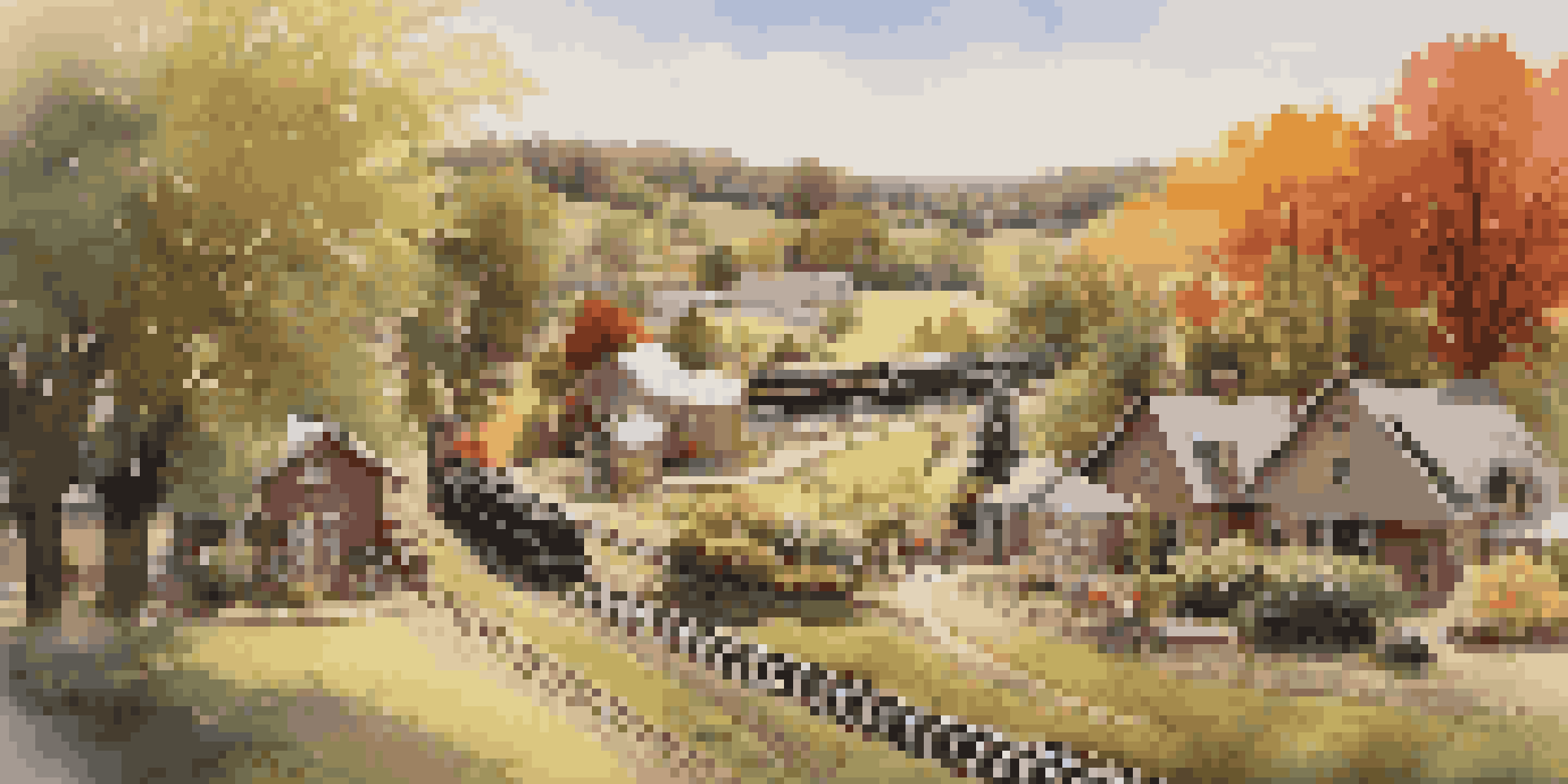The Role of Scale Models in Railroading Education

Understanding Scale Models in Railroading
Scale models are miniature representations of real-world objects, and in railroading, they play a crucial role in education. These models help students visualize complex systems, making it easier to grasp the intricacies of train operations and layouts. By working with models, learners can explore various aspects of railroading in a hands-on manner, fostering curiosity and engagement.
The only way to learn mathematics is to do mathematics.
The size and detail of scale models vary, from simple toy trains to highly detailed replicas of real locomotives and landscapes. This diversity allows educators to tailor lessons based on their objectives and the students' levels of understanding. For instance, younger students might enjoy playing with basic models, while older learners can delve into the technical aspects of model construction and operation.
In essence, scale models bridge the gap between theory and practice, offering a tangible way to understand the complexities of railroading. This hands-on approach not only enhances learning but also inspires students to explore the field further, nurturing a new generation of rail enthusiasts.
Enhancing Visualization through Scale Models
One of the significant advantages of using scale models in railroading education is the enhanced visualization they provide. Students can see how different components of a railway system interact, such as tracks, trains, and scenery. This visual representation helps demystify the concepts of railroading, making them more accessible and easier to understand.

For example, when students build a model layout, they can experiment with different track configurations and observe the effects on train movement. This hands-on experimentation encourages critical thinking and problem-solving skills, as learners must think about factors like gradients, curves, and junctions. Consequently, they gain a deeper appreciation of the engineering behind rail transportation.
Scale Models Enhance Learning
Scale models provide a hands-on approach that makes complex railroading concepts more accessible and engaging for students.
Moreover, visualizing the scale model in a broader context, like a city or a rural landscape, adds another layer of understanding. It allows students to appreciate how railroads integrate into larger transport systems, providing a comprehensive view of their importance in society.
Fostering Creativity and Imagination
Working with scale models in railroading education also fosters creativity and imagination. Students are encouraged to design their own layouts, choose themes, and create unique environments for their trains to operate in. This creative freedom not only makes learning enjoyable but also helps students develop a personal connection to the subject matter.
Imagination is more important than knowledge. For knowledge is limited, whereas imagination embraces the entire world, stimulating progress, giving birth to evolution.
As they build and customize their models, learners can explore historical themes, modern designs, or entirely fictional worlds. This process stimulates their imagination, allowing them to think outside the box and visualize possibilities beyond conventional railroading. It's a fantastic way to teach them that there are no limits to creativity in engineering and design.
Ultimately, this creative aspect of scale modeling ignites a passion for learning. When students see their ideas come to life, it encourages them to delve deeper into railroading concepts and possibly pursue careers in engineering, design, or related fields.
Building Practical Skills through Hands-On Learning
Hands-on learning is a powerful educational tool, and scale models provide an excellent platform for it. By manipulating physical objects, students develop practical skills that are applicable in real-world railroading scenarios. From assembling tracks to wiring electrical systems, the experience gained through model building is invaluable.
For instance, students can learn about the mechanics of train operation by experimenting with different power sources and controls. They gain insights into how locomotives function, how to troubleshoot issues, and how to maintain the integrity of the entire system. This hands-on experience lays a foundation for more advanced studies in engineering or transportation.
Fostering Creativity and Collaboration
Working with scale models encourages students to express creativity and collaborate, skills essential for real-world railroading.
Moreover, these practical skills can lead to increased confidence in students. As they successfully complete projects and overcome challenges, they build resilience and a sense of accomplishment, encouraging them to tackle even more complex tasks in the future.
Encouraging Teamwork and Collaboration
Scale modeling projects often involve collaboration, which fosters teamwork among students. Whether they're constructing a large layout or working on individual sections, learners must communicate and share ideas. This collaborative environment mirrors real-world scenarios where teamwork is essential in railroading operations.
Working together teaches students how to delegate tasks, resolve conflicts, and appreciate diverse perspectives. For example, one student might excel in scenic modeling, while another is skilled in electrical wiring. By combining their strengths, they can create a more cohesive and functional model than they could individually.
Ultimately, these collaborative experiences not only enhance learning but also prepare students for future employment opportunities. The ability to work well with others is a highly sought-after skill in any field, including railroading.
Integrating Technology with Scale Models
The integration of technology into scale modeling has transformed railroading education. Students can now use software to design layouts and simulate train operations before even touching physical materials. This technological aspect adds a modern twist to traditional modeling, making it more relevant to today's digital age.
For instance, programs allow for intricate planning of track designs, helping students visualize their projects in a virtual space. They can experiment with different configurations, test the flow of traffic, and even simulate weather conditions. This technology-driven approach enhances the learning experience and prepares students for careers where technology and engineering intersect.
Technology Transforms Modeling
Integrating technology into scale modeling enhances the educational experience and prepares students for modern careers in engineering.
Furthermore, the use of digital tools in modeling encourages students to embrace innovation and adaptability. As they navigate through software and learn to combine traditional skills with modern technology, they cultivate a mindset that is essential for success in any industry.
Conclusion: The Lasting Impact of Scale Models
In conclusion, scale models play a vital role in railroading education by making complex concepts accessible and engaging for learners. They not only enhance visualization and foster creativity but also build practical skills and encourage collaboration. As technology continues to evolve, the integration of digital tools further enriches the educational experience.
The impact of scale models extends beyond the classroom, inspiring students to pursue careers in railroading and related fields. The lessons learned through hands-on modeling often translate into real-world skills that are valuable in various industries. Ultimately, these models serve as a bridge between imagination and reality, paving the way for future innovations in rail transportation.

As we look to the future, it's clear that the role of scale models in education will continue to grow, adapting to the needs and interests of new generations. By nurturing a passion for railroading through these models, we ensure that the legacy of this fascinating field lives on.